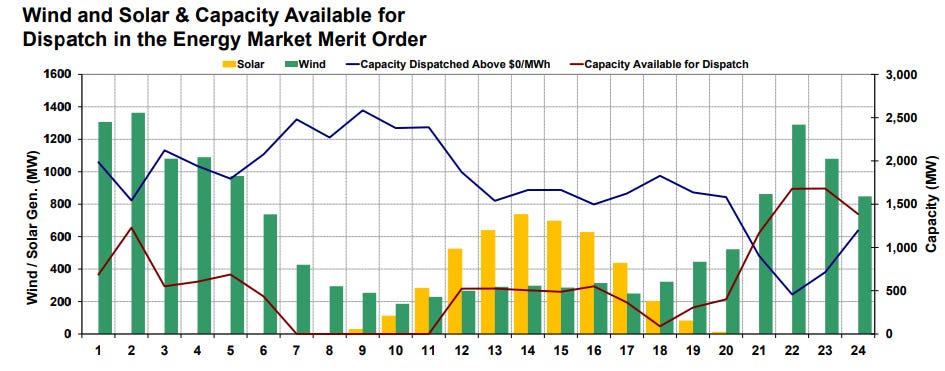Many Albertans are questioning what is happening to Alberta’s electricity system after the few grid emergencies we have experienced over the past few months.
Below is an excellent recap of the situation in Alberta by Jason Doering of oHmland. Jason’s Substack has some great info about the Alberta Electricity Market and you should consider subscribing.
“The Alberta Electric System Operator (AESO) held a media briefing on Apr 5th to explain the supply shortfall event that took place that morning. There are many media articles and pundits interpreting the event (including me :)), but I urge anyone who wants to understand what really happened to listen to the webinar the AESO has posted on its website. Here is a link: AESO Media Briefing on Apr 5th Event
We should all be grateful to the AESO’s System Controllers for the work they did on Apr 5th and every day of the year to keep the electrons flowing. They are trying to manage a very fragile system and are faced with numerous challenges every week that are making their jobs increasingly difficult and stressful, so we owe them a debt of gratitude.
My summary of the facts – but please also listen to the AESO’s explanation:
- many generators were on planned maintenance outages, which is normal during the spring season in Alberta when our demand is low
- some dispatchable capacity was offline because they were uneconomic due to low pool prices over the preceding days, which is also normal in our market design
- wind generation forecast error (lower than forecast) combined with an approximately 400 MW thermal unit trip during the morning load ramp resulted in an Energy Emergency Alert 3 at 6:49 AM on Apr 5, 2024
- the AESO directed all operating reserves to provide energy, all available dispatchable generators to provide as much energy as possible, and tried to get as much energy from the interties as possible
- this was insufficient to meet demand, so the AESO directed the transmission and distribution system operators to perform controlled load shedding of about 250 MW for about 20 minutes to rebalance supply and demand until the system was stabilized
My observations, but please also listen to the AESO’s explanation to draw your own conclusions:
- the Jan 13, Apr 3, and Apr 5 events were all supply adequacy problems. A power system with sufficient dispatchable generation capacity in reserve (reserve margin) should be able to handle forecast errors, planned outages, and generation and transmission contingencies (aka “trips”). The Alberta system has insufficient reserve margin due to many years of policy/social preference for renewables over thermal generation and we are now experiencing the effects of over-investment in renewables and under-investment in dispatchables.
- this is not the AESO’s fault, it is the outcome of a market and policy framework designed for a different context in which economics alone were relied upon to provide resource adequacy. The AESO is doing the best it can to manage the system within their legislated authourities, which do not include resource adequacy. Blaming and shaming is a waste of time – the solution is policy and market design change and we should use this as motivation to address these.
- this problem is not unique to Alberta, it is happening in all jurisdictions to varying degrees. The difference in Alberta is that we are essentially an electrical island with very little intertie capacity, so our resource adequacy problems and our over-exposure to weather-dependent resources are very visible because we cannot mask them with energy from interties to compensate for our problems, like other jurisdictions can. We have nowhere to hide.
- this was a resource adequacy problem, not a reliability problem. I hear the media calling this a reliability issue, but it was not, and the difference is important because it determines the solutions we need. I’ve provided the NERC definitions of adequacy and reliability below – the language we use matters.
Adequacy – the ability of the electric system to supply the aggregate electrical demand and energy requirements of the end-use customers at all times, taking into account scheduled and reasonably expected unscheduled outages of system elements.
Reliable Operation – operating the elements of the Bulk-Power System within equipment and electric system thermal, voltage, and stability limits so that instability, uncontrolled separation, or cascading failures of such system will not occur as a result of a sudden disturbance, including a cybersecurity incident, or unanticipated failure of system elements.
Pictures tell better stories than words, so here is the situation the AESO was dealing with on Apr 5th. The maroon “Capacity Available for Dispatch” line tells the resource adequacy story…

Final Thoughts
The solution for our power system problems in Alberta is market and transmission policy change, not blame and recrimination. The Alberta government is already moving down this path in collaboration with the power system agencies and industry and I hope this event provides the motivation to expedite those efforts.”
Again, if you found this information useful, check out oHmland and throw some $$$ his way.

